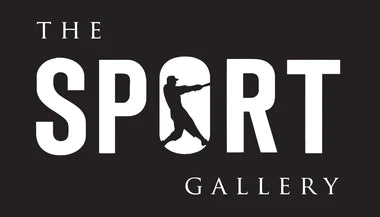Many born in the latter decades of the 20th century – even those that consider themselves sports aficionados – aren't aware of SPORT Magazine and its important role in North American popular literary culture. And that's a shame, because SPORT was a big deal!
Does the name ring a bell? Chances are your first thought would be of Sports Illustrated, which is close, but not quite right. SI, first published in 1954, gradually became the go-to sports publication, a title held until recent years, when the print magazine as a concept began to die.
SI was not, however, the first of its kind. There's a long history of sports literature in North America; The Sporting News, for example, debuted in 1886 and quickly became a "bible," especially for baseball fans. But the most direct source of inspiration for SI was not The Sporting News. It was – you guessed it – SPORT Magazine.
SPORT first hit news stands in September, 1946. The inaugural issue included eight full-colour pages – unheard of at the time – and almost immediately rose to over a million in circulation. Unlike The Sporting News before it, or SI after it, which were weekly publications, SPORT came out monthly, which allowed for long-form journalism and expansive photo spreads.
SPORT's groundbreaking use of colour photography, particularly during its first 30 years, captivated a generation of sports fans, many of whom wallpapered their bedrooms with the magazine’s exquisite full-page photos. SPORT used only acclaimed photographers, combining work from its own staffers with that of such acclaimed 20th century freelancers as Ozzie Sweet, Lawrence Schiller, Hy Peskin, and Neil Leifer.
It's common to have visitors in our galleries remark on how vivid and sharp our prints are; most assume they've been colourized, or that we've at least made enhancements. This is not the case! SPORT was that ahead of its time. We simply digitize the original negatives and any touch up any marks left over time. The colour is 100% authentic.
Aesthetically speaking, SPORT had a lot to work with... Beautiful, timeless uniforms made by hand. Jewel-box ballparks and ad-free hockey boards. No corporate sponsorships. It was a simpler time, before sports became a billion-dollar industry.

And then there's the subject matter. The first 10 or 15 years of SPORT's existence came at an excellent time. There were three Major League Baseball teams in New York alone, and the National Hockey League's Original Six was just forming. All-time stars like Joe DiMaggio and Maurice Richard ruled, and the professional ranks were beginning to diversify, thanks to Jackie Robinson. SPORT had an all-access pass and was able to document an unprecedented time in an unprecedented way.
The coverage of Robinson alone justifies SPORT's existence. A forward-thinking publication, SPORT helped to normalize the integration of the national pastime. They gave Robinson three covers, a bold move for the time, and intellectualized the Dodgers' plan. When one of the nation's most popular magazines takes this stance, it soon becomes the norm.
If imitation is indeed the greatest form of flattery, then SPORT received the ultimate compliment with the birth of SI – Time Inc. tried unsuccessfully to purchase the name SPORT but was rebuffed and instead launched SI, copying many of the mainstays that had made SPORT a cultural icon.
By the late 1970s, lacking Time's deep pockets, the SPORT franchise began to wobble. Thus ensued a dizzying succession of ownership changes. Gradually SPORT lost its way, its distinctive voice and, eventually, its presence. In August 2000, after 54 years, 647 issues, 10,000 articles and 40 million words, SPORT magazine ceased publication.
Shortly thereafter, the magazine assets were acquired by Toronto entrepreneurs. The cornerstone of the acquisition was SPORT’s historic photographic archive of approximately 250,000 images, a collection cited by a renowned U.S. appraiser as "among the most significant resources for 20th century photographic images of American sports figures in the world."
Today, those images live on at The SPORT Gallery locations in Toronto and Vancouver, and online. It's a true honour to maintain and promote the legacy of SPORT, given the magazine's historical significance. In addition to being found at our galleries, SPORT's classic photography has been integrated into a range of projects by sports leagues, TV companies and book publishers, including the NFL, NBA, MLB, ESPN, HBO Sports.

